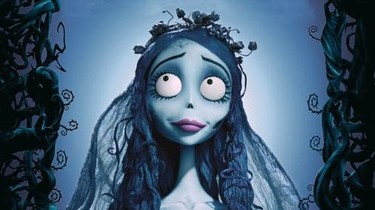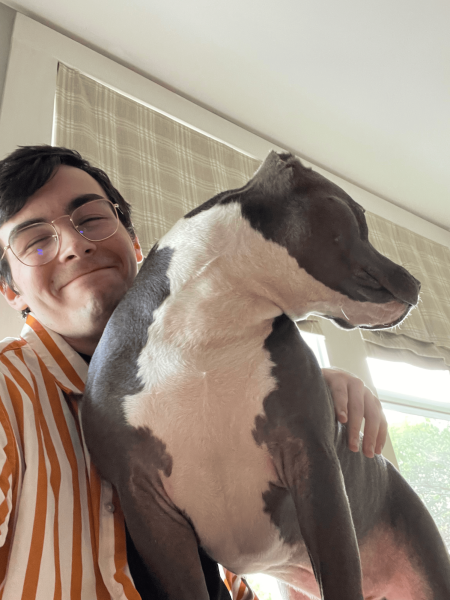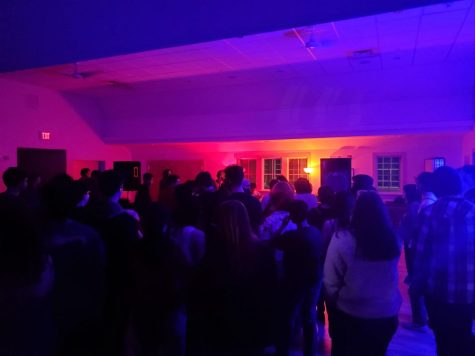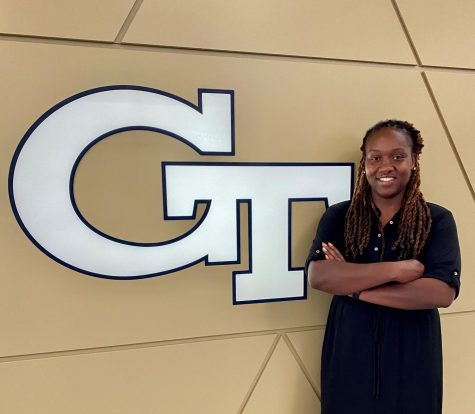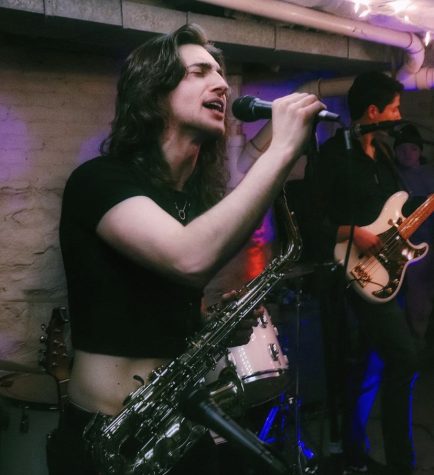Sev Ohanian: How YouTube fame turned into producing “Judas and the Black Messiah”
At first, he made a few videos with his friends from school. Now, he’s working with the likes of Daniel Kaluuya, Zendaya and Michael B. Jordan.

34-year-old Sev Ohanian started making tiny comedic YouTube videos as a teenager with his dad’s camera to poke a little bit of good fun at his Armenian culture. Now, he produces movies with multi-million dollar budgets, such as the Oscar-winning “Judas and the Black Messiah.”
At a mere few months old, Armenian American Ohanian immigrated from Germany to Los Angeles. Ohanian’s new hometown welcomed entertainers from all across the globe; a dream destination for any aspiring filmmaker. With such close proximity to Hollywood, Ohanian was tempted by all of the opportunities that dangled in front of him but his mother made certain that his education came first.
“When my mother was raising me, she was always taking me to the library and initially forced me to check out like six books every week,” Ohanian said in an interview with Amherst Wire. Suddenly, his mother’s influence became an intuitive habit for the blossoming storyteller. “After a few months, I was the one forcing her to take me to the library because I just really fell in love with storytelling and all of its possibilities.”
The start of a storyteller and leader

Trips to the library transformed into Ohanian’s dominant activity in high school as he joined Herbert Hoover High School’s journalism program, The Tornado Times. The program’s advisor and teacher, Brian Crosby, has a decorated passion for both journalism and writing himself. Crosby started out as a teacher who realized how poorly those in his profession were treated in the professional world. He took his frustrations to writing as his career amplified when he published a Los Angeles Times op-ed piece in 1998 on paying teachers six-figure salaries. His voice was finally heard. He continued to write opinion pieces that would be published to outlets such as the Chicago Tribune and the New York Times Magazine. Later, He switched things up a bit from his typical article format and decided to discuss educational issues in his books “The $100,000 Teacher” and “Smart Kids, Bad Schools.” With the publication of these articles and books, he garnered dozens of media interviews and speaking engagements at national panels. Some of which include invitations to speak on “The O’Reilly Factor” and “Washington Journal.” Bill O’Reilly agreed with the stances that Crosby took on issues in education. For ten years, he wrote a column for the Los Angeles Times community newspaper called “The Whiteboard Jungle” and now his personal blog, “Crosby Chronicles,” reaches its eighth year. Several people, including teachers, have disagreed with Crosby’s stance on certain educational issues, but the vast majority have been supportive of his messages. While all of this unraveled, Crosby also taught English for 31 years and journalism for 27 years to almost 6,000 students. Out of all of his students and all the different people he met, Ohanian stood out from the rest.
Crosby can always immediately identify which students on staff are well-read, in touch with the global community and want to participate in journalism whether it be to write, edit a layout or sell ad space; Ohanian was one of them. Eventually, Ohanian’s cultural awareness, work ethic and passion for journalism led to his eventual role as Editor-in-Chief for The Tornado Times during his senior year.

“When I first met him, you could just tell he was one of the ones that wasn’t struggling in school and that he was going to be successful so it doesn’t surprise me that he ended up being Editor-in-Chief,” Crosby said. “But I’m pleasantly surprised that he’s successful in the film business because the film business is grueling- anything in the entertainment field is so tough to get a break in.”
Despite the independent spirit Ohanian buried into The Tornado Times, he claims he couldn’t have done it without the mentorship of Crosby.
“Mr. Crosby has been instrumental in my development as a filmmaker and just in life. He is one of the first teachers that I’ve ever had in my life that transcended that role entirely for me because he would talk to you not as if you were a student, but rather as if you were a colleague,” Ohanian said. “What was great about Mr. Crosby was that he never dictated, he always suggested and he always advised, but he always trusted you to figure it out yourself.”

Under the supervision of Crosby, Ohanian taking on the Editor-in-Chief position set the standard of what a leader should be in his eyes.
“Now I’ve become a Hollywood producer and I’m making movies from tiny budgets ranging up to $200 million and it’s nothing if not a position of leadership,” Ohanian said. “Being an Editor-in-Chief of a high school newspaper is possibly harder than being a producer of a studio movie. So really, he did prepare me for the life that I live now and I owe a lot to him.”
The struggles of a senior

In his other classes, Ohanian deems himself a “pretty good student” as he received mostly A’s with a couple B’s here and there. However, tragedy ensued as Ohanian contracted a mysterious affliction in his last semester of high school. This disease has been known to afflict upwards of hundreds of millions of adolescents every year for decades upon decades. You may have gotten it too without a proper diagnosis. Symptoms include, but are not limited to, constant fatigue, memory loss and excessive hypersomnia, especially in a boring class. The diagnosis: senioritis.
“I was in this AP environmental science class and I had already gotten into my dream college but I guess it turns out that I was getting a freaking D in the class,” Ohanian said. “It wasn’t my fault, I was a sick person.”
Just like any senior accepted into their dream college, Ohanian feared that he would get rescinded because of his poor grade. Because of this, he begged his teacher to change his D to a C. Ohanian’s teacher agreed that he could raise his grade if he produced an essay. Desperate to improve his grade but sickened by the idea of another painful essay, Ohanian suggested he produce a video instead.
With his dad’s video camera, Ohanian filmed a 20-minute documentary about littering around Hoover’s campus. Ohanian recruited his friends to record them committing environmentally careless acts like spilling soda or dropping half-eaten food on the ground. The documentary contained slow-motion shots and interviews with students. Throughout the 20-minute runtime, Ohanian included a quiet voiceover narration. Although it might have made the documentary appear more dramatic, it wasn’t intentional. Like most suffering from senioritis, the night before the project was due he plopped in front of his computer at 3 a.m. to complete the project. His whispered narration was only implemented to not wake up his sleeping parents.
The next morning, he handed a DVD copy of the documentary to his AP environmental science teacher. Immediately, she put him on the spot. “What are you doing? You gotta put it into the TV so we can all watch it as a class,” Ohanian recalls her saying. All of a sudden, Ohanian’s body seized with horror. He imagined no one would ever see this movie aside from his teacher. Nevertheless, he did as she wanted and played the DVD to the entire class. As those 20 minutes passed by, Ohanian began to notice the reactions from his fellow classmates.
“The students were appreciating the doc because they were laughing at the jokes I put in there and they were kind of reacting to the operatic moments,” Ohanian said. “And there was a resounding round of applause at the end, which was insane because it was kind of my first ever audience in my life and it was in my high school to try and save my a–.”
In the end, Ohanian did not receive the agreed-upon C in his AP environmental science class but earned an A instead. This begins the chapter where Ohanian realized that he can do even more with his filmmaking skills.
Going viral with dad’s old camera

Ohanian started filming a few skits similar to what is seen on TikTok today. As an Armenian American, Ohanian and his friends made YouTube videos dressing up as their parents and poking a little bit of good fun at Armenian American culture. These videos became viral to the Armenian community worldwide. After producing a handful of short videos, Ohanian decided he was ready to produce an entire feature film. “My Big Fat Armenian Family” looks into the lifestyle and drama of a traditional Armenian American family. Despite its 100-minute runtime, the film’s budget was a total of $800.
“I wrote it, I directed it, I shot it, I produced it, I edited it- I actually did everything except for makeup, and then the makeup artist quit but I ended up doing that too,” Ohanian said.
Upon the film’s release, Ohanian sold tickets for the movie to his high school which contained a large Armenian demographic. In over 20 countries, several thousand DVDs were sold on an old website that no longer exists called filmbaby.com. “My Big Fat Armenian Family” became a huge financial success even though Ohanian never intended for that to be the case. DVDs completely sold out back in 2009, but the movie was reuploaded to YouTube for its 10-year anniversary in 2018. On YouTube alone, it garnered over 50,000 views. Due to the overwhelming emotional resonance this one extremely low-budget film created, Ohanian felt inspired to continue on with his filmmaking.
The real-life Hogwarts
Ohanian attended the University of California San Diego to receive his Bachelor’s in visual arts. One year into his program, Ohanian officially decided he wanted to make filmmaking his entire life and was intent on attending graduate school for film and television production. Credits from AP tests and summer courses allowed Ohanian to finish his undergraduate degree in three years. This advantage created a head start for the young filmmaker.
As there are more aspiring Aronofsky’s and Anderson’s than there are stars floating in the cosmos, the industry is competitive and the best schools for film are jammed with successful applicants who never receive entry. Bold and faithful in his abilities, Ohanian applied to one school. One of the best film programs period, the University of Southern California. While he recalls his time at USC as one of the happiest memories of his life, upon acceptance, Ohanian felt a little bit insecure about his dream admission.
“I was extremely young at the time and I was extremely insecure because all I had was this little fun Armenian movie that I had made with my friends on my dad’s video camera. I was in so many classes with the greatest potential filmmaking minds of my generation,” Ohanian said. “But it was incredible and it was hard. It was like a combination of Hogwarts and ‘American Gladiators,’ because it’s so competitive. At USC, despite the competitiveness of it all, it’s kind of where I met my biggest collaborators today.”
During his time in USC, Ohanian met his wife Natalie Qasabian and writing partner Aneesh Chaganty. This trio would eventually collaborate to make the computer screen-centric mystery thriller “Searching” in 2018. One of Ohanian’s most notable collaborators from USC was Ryan Coogler, best known for directing “Black Panther” and “Creed.”
“I owe a lot to my education,” Ohanian said. “Well, technically I owe a lot because I also owe them a lot of student loans, but that’s a different story.”
Straight outta college

Almost immediately after graduation from USC, he collaborated with Coogler as a co-producer on an indie film called “Fruitvale Station” which was showcased at Sundance Film Festival and helped launch Michael B. Jordan’s acting career as an adult. During the process of “Fruitvale Station,” as production wrapped, Ohanian was contacted by Brenda Goodman, a producer of documentaries and indie films and coordinator for the producing department at USC. Goodman told Ohanian about a professor that was supposed to start teaching that semester but was unable to for personal reasons. Barely two years out of school, Ohanian was shocked to find Goodman offering him this vacated position.
Ohanian accepted the job thinking that it would only be a one-time thing. However, one semester quickly passed and transformed into nine consecutive semesters teaching at his alumni institution.
“I really was channeling all of the greatest teachers and professors I’ve ever had in my life, including Mr. Crosby, by teaching,” Ohanian said. “Those students of mine have become good friends, mentees, colleagues of my own… so it was incredibly, incredibly rewarding to be on the other side of that classroom.”
Teaching gave Ohanian a different sense of satisfaction, but he had to cut it short because of how time-consuming it was, especially when balancing his responsibilities as a writer and producer at the same time. Ohanian would continue to produce more critically acclaimed movies, even under the title of executive producer.
Being an executive producer is detrimental for any movie set, but is often overlooked by audiences. Who directed “Jurassic Park?” Steven Spielberg. What about the first “Star Wars” movie? George Lucas. “2001: A Space Odyssey?” Stanley Kubrick. Could you name any producers from those movies? Probably not, unfortunately. Oftentimes, a director will look at specific details when filming a movie whether it be which props are being used, the tone in which actors deliver their lines or how stunts are being choreographed. Producers like Ohanian are every director’s right-hand person doing a lot of note-taking and communication among the cast and crew.
“When I watch different takes in a movie, I’m looking for everything and when the director’s really focused on one particular element, I can remind him or her of the bigger picture. I would say, ‘hey, I liked that take, I feel like we will benefit from a version in which that actor, for instance, is more aggressive in this take, because I think we need that scene so that later on in the movie, when he’s apologizing, there’s something for him to apologizing for,’” Ohanian said as an example. “It’s a lot of communication with the director about wanting more takes and wanting different things. But other times, it’s just simply telling the director ‘Yo, we got it.’”
Producers also act as problem solvers. For example, if it turns out that a filming location is no longer available for a movie at a certain time, producers need to find a way to work it out, whether it be to film somewhere entirely different or move around the production’s schedule. Ohanian calls this process “putting out fires.”
In one of Ohanian’s next movies with Chaganty, he noticed a huge plot hole in the third act of the screenplay. For two hours, the duo talked to one another to try and patch the plot hole and make sure audiences won’t be left scratching their heads as they walk out of the theater. For his next movie “Space Jam: A New Legacy,” he held an entire meeting just to discuss the best songs to put into the movie. Imagine how different “Guardians of the Galaxy” would be if it featured Mongolian throat singing or deathcore instead of its iconic 60s and 70s rock melodies. This is just a slice of what a producer does. The job is a dash of business, a dash of creativity and a whole lot of communication with peers.
Winning two Oscars with “Judas and the Black Messiah”

Opportunity, for Ohanian, flows not without effort, but in part due to his USC connections. After “Fruitvale Station,” Coogler didn’t forget about Ohanian. An early screenplay draft appeared in Ohanian’s inbox from the “Black Panther” director. It was the story of betrayal, a more modern Caesar and Brutus but perhaps more insidious. “Judas and the Black Messiah” was about to change his life. The draft featured the story of a Black Panther leader named Fred Hampton being betrayed by his right-hand man. What left him in awe was the fact that the screenplay that kept him on the edge of his seat encaptured a real-life person who Ohanian had never even heard of before.
“‘Judas and the Black Messiah’ was one of those scripts that when I read, I was exhausted by the end of it because I was totally swept away with the ups, the downs, the emotions, the frustration. I couldn’t believe that that was a true story,” Ohanian said. “Reading that script, being as illuminated by it as I was and knowing that this man’s story was not well-known, I had to be involved; it was no question.”
There’s a lot of communicating in the job of a producer, but Ohanian had to act as a conduit with some of the most important figures of any movie set for “Judas and the Black Messiah,” the late Hampton’s son Fred Hampton Jr. and the late Hampton’s widow Akua Njeri.
Chairman Fred Hampton Jr. & Daniel Kaluuya #JudasAndTheBlackMessiah Oscars 2021 pic.twitter.com/ksrEC8a3Iu
— Chairman Fred Hampton Jr (@ChairmanFredJr1) April 26, 2021
“It was very important to us as the filmmakers to have them as descendants and survivors of the real-life story of ‘Judas and that Messiah,’” Ohanian said. “They were on set just about every single day and that, by the way, is an incredibly rare situation in any movie.”
Alongside his other producers, Ohanian would hear ideas from the Hamptons and director Shaka King to produce a good middle ground between the suggestions. He would ask the Hamptons questions if they had any notes, changes or suggestions almost constantly. There would be some cases in the writing process where certain details contradicted the truth in what actually happened to Hampton. No matter what contradictions arose, there was always a happy compromise made between all parties.
Ohanian also helped produce the official “Judas and the Black Messiah” podcast which features Fred Hampton Jr. and Njeri as guests in the first two episodes.
After a lot of different drafted screenplays, takes and meetings, “Judas and the Black Messiah” was nominated for six Oscars and won two.
Daniel Kaluuya first rose to fame in the British teen comedy-drama “Skins” where he successfully juggled playing Posh Kenneth and serving as a writer on multiple episodes at the tender age of 18. About a decade later, Kaluuya turned the heads of American audiences with his lead role in Jordan Peele’s “Get Out.” Kaluuya’s Chris earned himself an Oscar nomination for best actor back in 2018. However, Gary Oldman nabbed the award that year for his portrayal of Winston Churchill in “Darkest Hour.”
Kaluuya felt the pressure of putting on a great performance alongside the pressure of preserving the legacy of an important figure in Black history. He can confidently say he did both as he won the Oscar for best actor in a supporting role, marking his first-ever Oscar win.
“Not only does [Kaluuya] deserve it, because he was a phenomenal actor but the way Daniel carried himself and the way he made sure to honor the legacy of Chairman Fred Sr. and frankly, the way that he behaved with himself with the actors and crew show us that he’s a man of complete dignity,” Ohanian said.
Early on in the production of the film, Ohanian and his team wanted to end “Judas and the Black Messiah” with a song that wasn’t too depressing but also wasn’t too frivolous because of the film’s somber ending. Ohanian’s producing partner, Archie Davis, collaborated with H.E.R. and her team to create a song with the perfect balance of emotions. As soon as the rest of the team heard the song, there was no more discussion to be had; it was perfect. For this perfect collaboration, “Fight for You” by H.E.R. received the Oscar for best original song.
“It was nice to see all the other nominations our film had, but frankly, what we’ve all been saying for the last couple of months is we already won,” Ohanian said. “Just the fact the movie came out and found its audience, there is no greater honor than that.”
How do I become the next Sev Ohanian?

Ohanian advises any aspiring filmmaker to put forth an effort to self-educate. Reading every book that you can get your hands on on filmmaking and screenwriting or analyzing PDFs of screenplays online costs little money and requires no resources and no connections.
“And you’re coming into it with a whole lot of knowledge that other folks, frankly, don’t necessarily take the time to do,” Ohanian said. “And that’s honestly what has helped me and I know that’s what’s going to help others who want to do the same thing. Hollywood does not require you to have a rich uncle.”
Ohanian’s next film, “Space Jam: A New Legacy,” headlined by LeBron James, Zendaya and Don Cheadle, will be released in theaters and on HBO Max on July 16.
Email Aaron at [email protected] or follow him on Twitter @WhatTheFacundo.






